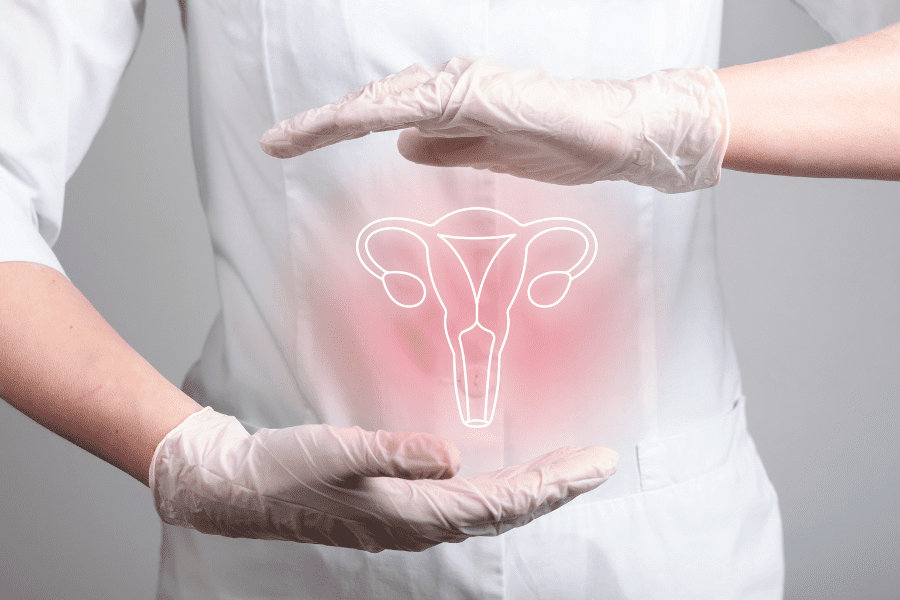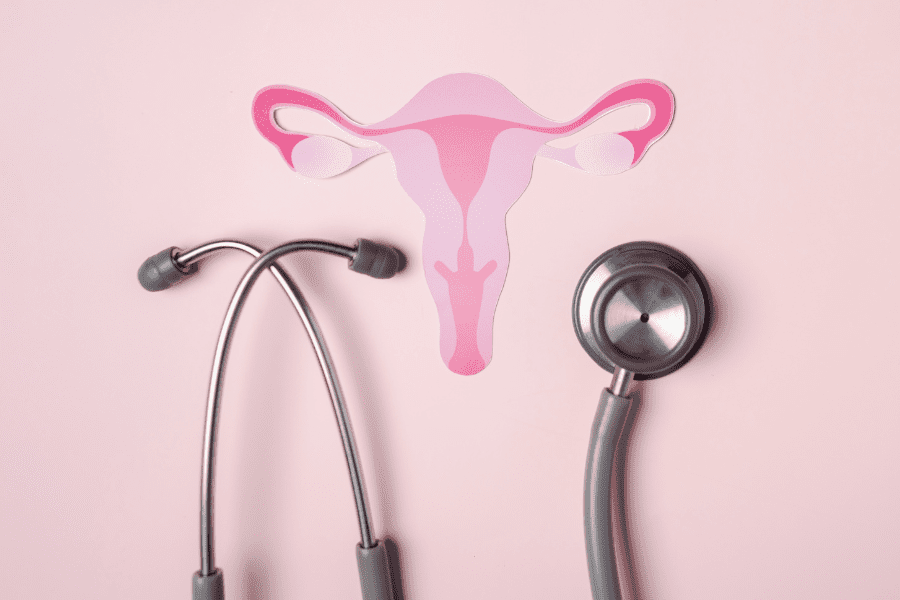 What causes cervical cancer?
What causes cervical cancer?- What are the signs of cervical cancer?
- Are there different types of cervical cancers?
- How is cervical cancer treated?
- Can cervical cancer be prevented?
A cancer diagnosis can be frightening. While scary, such a diagnosis has a much higher likelihood of recovery now than it has in the past. Take cervical cancer as an example. Cervical cancer used to be a leading cause of death for American women. Today, the five-year survival rate for an early diagnosis of localized cervical cancer is 92%. Annual Pap smears and the HPV vaccine have helped us come a long way in our fight against cervical cancer. These preventative tools show just how much progress science has made to save lives.
In this blog, we’ll discuss what it means to have cervical cancer, as well as these common questions:
What happens in your body when you have this disease? How is cervical cancer treated? What steps can you take right now to prevent cervical cancer?
What Causes Cervical Cancer?
 Cervical cancer is an abnormal growth of cells in the cervix, which is the lower part of the uterus at the top of the vagina. Almost all cervical cancers develop from lengthy infections of genital human papillomavirus (HPV), which is a virus passed between people during sexual activity. There are several different types of HPV—some can cause the cervical cells to mutate and grow wildly out of control, developing into cancer.
Cervical cancer is an abnormal growth of cells in the cervix, which is the lower part of the uterus at the top of the vagina. Almost all cervical cancers develop from lengthy infections of genital human papillomavirus (HPV), which is a virus passed between people during sexual activity. There are several different types of HPV—some can cause the cervical cells to mutate and grow wildly out of control, developing into cancer.
Unfortunately, HPV is a widespread infection in the United States. Most of us have had HPV at some point. In many cases, people don’t realize they have an infection because the virus goes away on its own without symptoms and without any treatment. We don’t yet fully understand why some people develop cancer from HPV and why others do not, although there seem to be environmental and genetic factors that play a role. Generally, the body’s immune system wards off the HPV infection but in a small number of cases, HPV holds on for years and becomes dangerous.
Some risk factors for increasing the risk of developing cervical cancer, include:
- A weakened immune system
- Multiple sexual partners (more likely to have HPV)
- HIV infection (weakened immune system)
- If your mother was treated with a 1950s miscarriage-prevention drug called DES
- Smoking
The good news is that Cervical cancer very preventable with screening. This is why it is so important to see your doctor for a yearly wellness exam.
What Are the Signs of Cervical Cancer?
Early-stage cervical cancer often has no signs and goes undetected unless identified during screening with a Pap smear. More advanced cervical cancers cause:
- Pelvic pain and pain during sex
- Vaginal bleeding after sex, between your periods, or after menopause
- Watery, foul-smelling, and blood discharge
See your doctor if you have these symptoms.
Are There Different Types of Cervical Cancers?
 Yes, there are two main types of cervical cancer.
Yes, there are two main types of cervical cancer.
- Squamous Cell Cancer – the most common form, affecting the outside/lower cells of the cervix
- Adenocarcinoma – starts in the mucus glands that line the upper cervix
- Small Cell Cancer – a rare former that occurs in <1% of cases
Cervical cancers, like all cancer types, are staged according to their progression from one to four:
- Stage 1 – cervical cancer is localized to cervix and uterus but hasn’t spread beyond
- Stage 2 – cervical cancer spreads beyond the cervix and uterus but not beyond the pelvis
- Stage 3 – cervical cancer is more advanced, extending past the vagina and pelvis and may involve local lymph nodes
- Stage 4 – cervical cancer that has spread to bladder or rectum or more distant spread
Each stage of cervical cancer displays different symptoms. For example:
- Stage 1 may have no symptoms at all
- Stage 2 can cause bleeding, discharge, and pelvic pain
- Stage 3 and 4 can cause urination problems, leg swelling, pain, bloody discharge, and other uncomfortable symptoms
Cervical cancer is treatable at its different stages with varying survival rates based on how quickly the disease is diagnosed. This is exactly why preventative care is so important.
How Is Cervical Cancer Treated?
The treatment used for cervical cancer depends on the stage.
Doctors usually treat early stage cervical cancer surgically. Occasionally just removal of the cervix (trachelectomy) is done. However, most of the time a hysterectomy is performed to remove the cervix, uterus, and usually part of the vagina.
Sometimes radiation is needed as well.
More advanced stages of cervical cancer may involve radiation, chemotherapy, immunotherapy and/or targeted therapy.
Can Cervical Cancer Be Prevented?
 Yes, you can reduce your risk of cervical cancer by:
Yes, you can reduce your risk of cervical cancer by:
- Not smoking
- Routine screening with Pap smears and/ or HPV testing which can detect precancerous cells in the cervix
- Practicing safe sex by using a condom and limiting the number of sexual partners
- Talking with your doctor about the HPV vaccine to prevent the spread of HPV infections
We’ve made great strides in developing two critical preventative tests to help detect cervical precancer. We can remove cervical precancerous cells and actually prevent many cervical cancers. They include:
- Pap test
- HPV DNA test
The HPV vaccine is also a preventative treatment that protects younger women from the virus. It is recommended as early as age nine and for women up to age 45.
The Pap test is a screening test that doctors typically perform during an annual wellness exam. Cervical cancer screening can actually PREVENT cervical cancer because we identify and treat precancerous cells in the cervix.
During a pap exam, your doctor will carefully collect cells from the cervix. The sample will then go to a lab for testing. An HPV DNA test takes those cervical sample cells and looks for infection from any of the HPV types that can lead to cancer. The Pap smear looks at cervical cells under the microscope to detect abnormal appearing or precancerous cells. Pap smears and HPV testing are evolving to screen for cervical cancer. Talk to your doctor to know the appropriate screening interval (how often) for you.
Women First of Louisville is devoted to the care of our clients. If you haven’t scheduled your annual wellness exam for 2023, don’t hesitate to contact us today.
